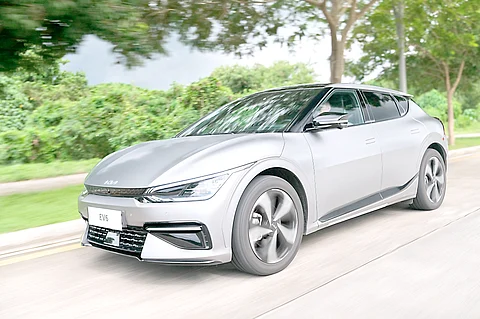
- NEWS
- the EDIT
- COMMENTARY
- BUSINESS
- LIFE
- SHOW
- ACTION
- GLOBAL GOALS
- SNAPS
- DYARYO TIRADA
- MORE

With the rainy season in full swing, drivers face added risks on the road, from flash floods to unexpected power outages. Kia Philippines, one of the country’s leading automotive brands for fuel-powered, hybrid, and fully electric vehicles, encourages drivers to take simple precautions that can make all the difference during typhoon season.
“The rainy season brings unique challenges for every motorist, and Kia remains committed to helping drivers stay prepared and protected,” said Jay Lopez, managing director of Kia Philippines. “Through our 24/7 roadside assistance and practical safety tips, we’re making sure every Kia owner can face the road ahead with greater confidence, no matter the conditions.”
As part of its commitment to reliable and responsive mobility, Kia shares tips for vehicle readiness before, during, and after a typhoon, reinforced by its complimentary 24/7 nationwide roadside assistance program.
Before a typhoon
• Secure a safe parking location: Move your vehicle to higher ground or covered parking to protect it from rising floodwaters and flying debris.
• Photograph your vehicle: Take clear photos of your vehicle’s current condition for documentation in case insurance claims are needed later.
• Charge your EV in advance: Ensure your EV is fully charged in case of extended power outages.
• Inspect your vehicle: Check tire pressure, brakes, lights, windshield wipers, and the battery. For EVs, confirm that ports and connectors are clean and dry.
• Prepare an emergency car kit: Include basic tools, a flashlight, first aid supplies, power banks, and important documents stored in a waterproof container.
• Know your support options: All drivers should keep their vehicle’s emergency details on hand and save their brand’s roadside assistance hotline. For Kia owners, free 24/7 roadside assistance is available nationwide, offering dedicated support when you need it most.
During a typhoon
• Avoid driving through floodwaters. Just six inches of water can stall or damage a car. EVs may be more resilient to brief water exposure, but should still avoid flooded roads due to hidden debris, submerged hazards, or potential electrical risks.
• If driving through floodwater is unavoidable, proceed slowly and steadily through shallow areas, staying in the center of the road where the water is typically less deep. Avoid stopping or changing gears midstream, and once clear of the water, gently apply the brakes to help dry them out.
• If water levels rise around your parked vehicle, do not attempt to move or start the vehicle. Turn off the ignition or main power immediately. If the situation allows and the driver is knowledgeable, disconnect the 12V battery to help minimize further electrical damage. If unsure, wait for professional assistance.
After a typhoon
• Inspect before starting: Once it’s safe to approach, check for visible damage such as mud lines, debris, or water ingress, especially under the chassis, inside the engine bay, and around electronic or high-voltage components for EVs.
• Avoid turning on a flooded vehicle: Starting a car that has been submerged can cause severe damage, including engine hydrolock or short circuits in electrical systems. Instead, disconnect the battery if safe, and call roadside support such as Kia’s 24/7 assistance for professional recovery.
• Seek a certified inspection: Even if your vehicle appears unaffected or starts normally, it’s important to bring it to an authorized service center for a thorough inspection, as hidden water damage can compromise long-term safety and performance. Kia owners are encouraged to visit any authorized Kia service center for expert diagnostics and care tailored specifically to their vehicle.
